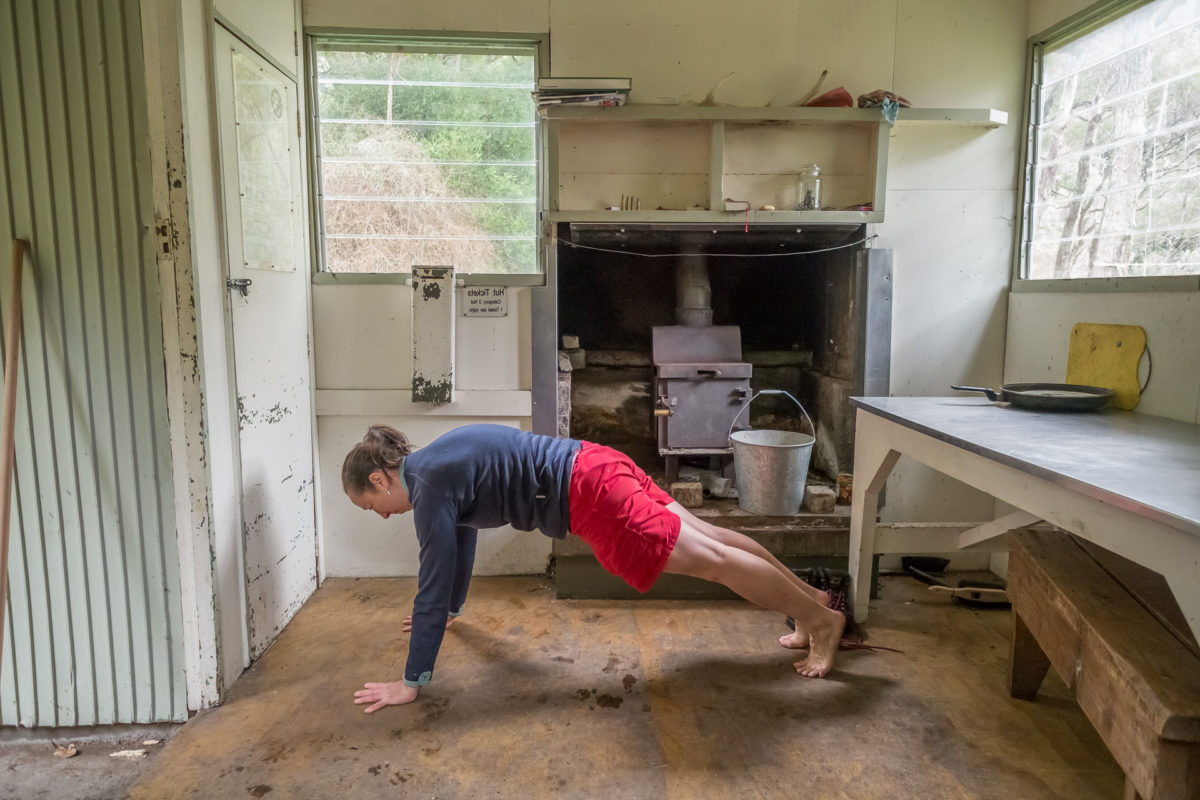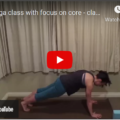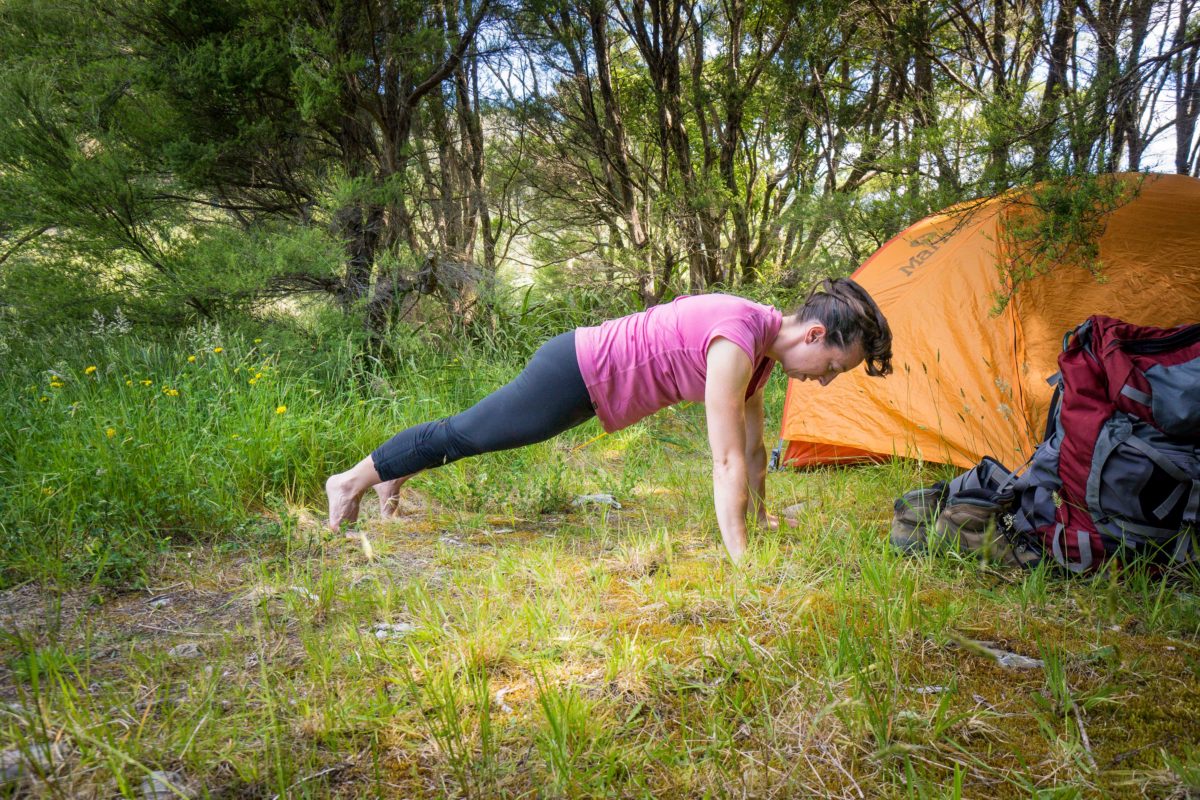The sun salutation sequence in yoga moves through a number of physical poses including plank and movements that resemble a press-up.
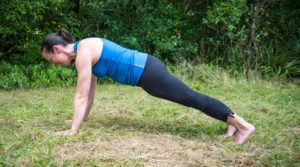
We often mistakenly think plank and the movement of lowering down and pressing up are about arm strength. But it also requires a lot of core strength and you can involve the muscles in your legs. The more you use these muscles, the easier it is to stablise and protect your spine. It also helps you build strength in those muscle groups.
To help activate your core muscles, it helps to think about not letting your belly sag. But that’s not always enough.
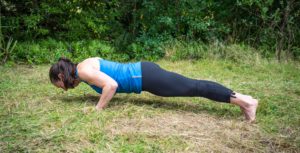
Sometimes you still end up with a sway in your lower back. This isn’t great for your lower back and means you aren’t using enough core and length strength.
If you focus on your hips and pelvis, it can be easier to activate the muscles in your core.
Next time you do plank pose, trying squeezing your buttocks. This should start to tip your tailbone down. This will help move your back into a more neutral position.
If you then think of squeezing your thighs towards each other, you’ll get extra help from the muscles in your legs.
Once you have mastered that, the bigger challenge is keeping the muscles active while you lower down and even harder, keep those muscles active when you press-up. If you find this hard to do, trying squeezing a block or small foam roller, or even a rolled towel between your thighs. You can also lower down and press-up with your knees on the floor. It’s harder to activate the leg muscles, but much easier on your core.
Check out this article if you want to learn a little more about the spinal movement and muscles involved in plank pose.

